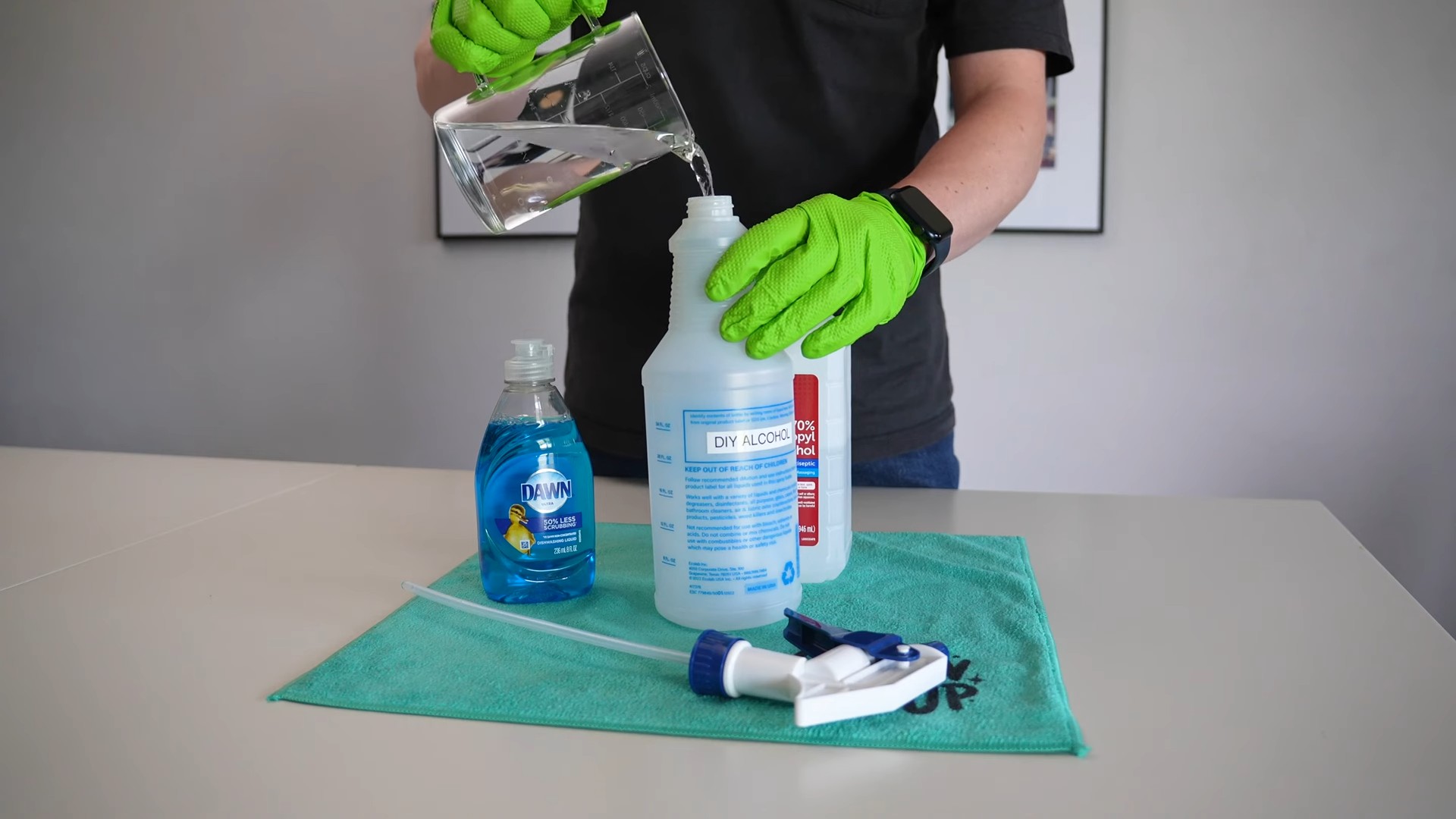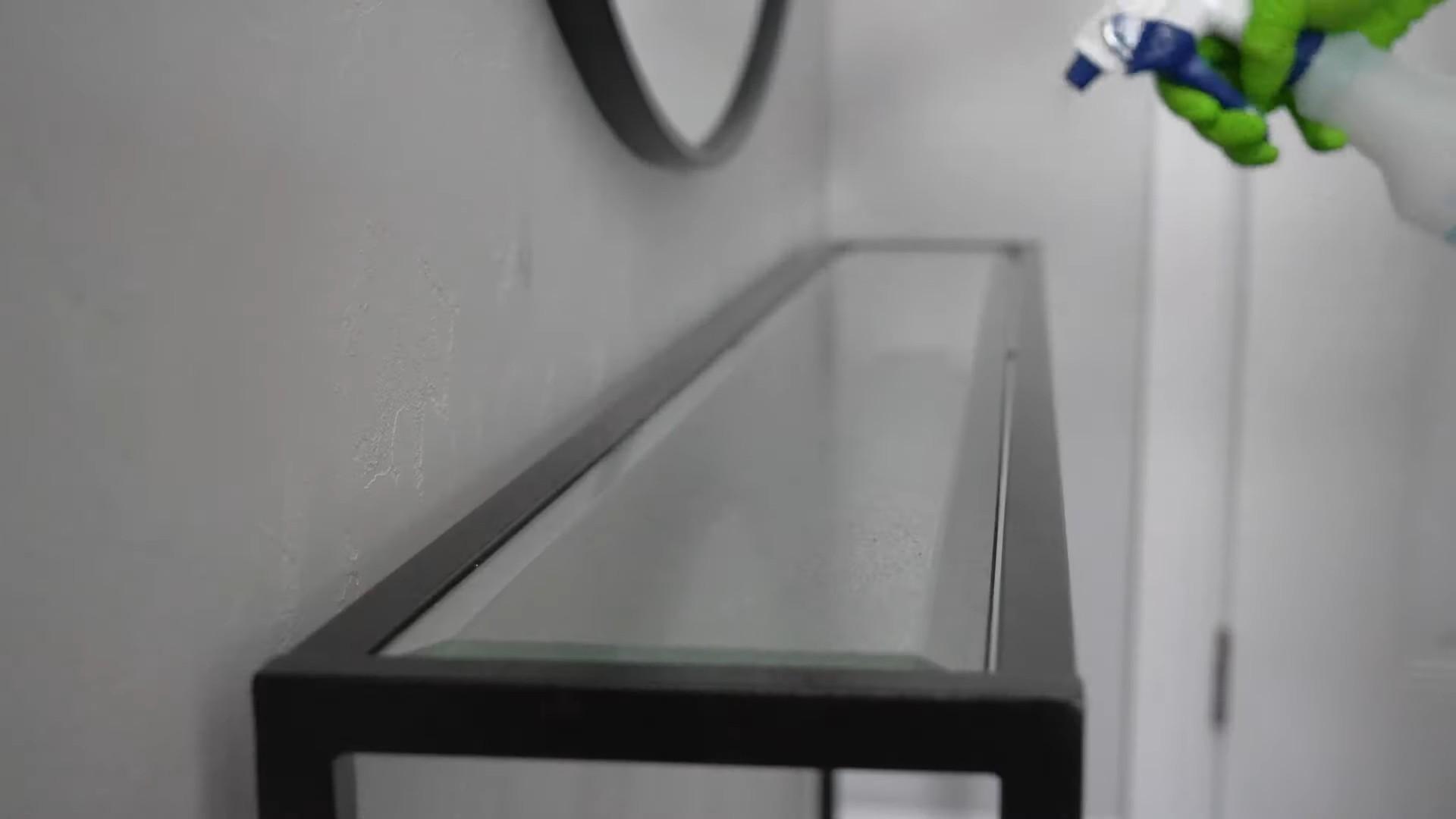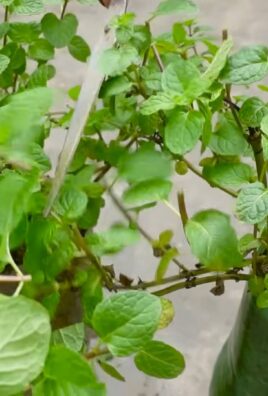Homemade Cleaning Solutions: Unlock the secrets to a sparkling home without breaking the bank or harming the environment! Are you tired of harsh chemicals and sky-high prices for cleaning products? I know I was! That’s why I dove headfirst into the world of DIY cleaning, and let me tell you, the results are amazing.
For generations, our grandmothers relied on simple, natural ingredients to keep their homes clean and fresh. Think about it – before the age of mass-produced cleaners, vinegar, baking soda, and lemon were the go-to powerhouses for tackling grime and germs. This tradition isn’t just about saving money; it’s about connecting with a more sustainable and healthier way of living. It’s a return to resourcefulness and a rejection of unnecessary chemicals in our homes.
In today’s world, where we’re increasingly aware of the impact of our choices on the planet and our health, learning how to create your own homemade cleaning solutions is more important than ever. Not only will you reduce your exposure to potentially harmful chemicals, but you’ll also save a significant amount of money. Plus, it’s incredibly satisfying to know exactly what’s going into your cleaning products and that you’re making a positive impact. This article will guide you through some easy and effective DIY cleaning recipes that will leave your home sparkling and your conscience clear. Let’s get started!

DIY Cleaning Solutions: Ditch the Chemicals, Embrace the Natural!
Hey there, fellow cleaning enthusiasts! I’m so excited to share some of my favorite homemade cleaning solutions with you. I’ve been on a mission to reduce the number of harsh chemicals in my home, and these recipes have been a game-changer. Not only are they better for the environment and my family’s health, but they also save me a ton of money! Let’s dive in!
All-Purpose Cleaner: Your New Best Friend
This all-purpose cleaner is incredibly versatile. I use it on countertops, sinks, appliances, and even floors (with a little dilution, of course!). It’s effective, smells great, and you probably already have most of the ingredients on hand.
What you’ll need:
* Spray bottle
* 1/2 cup white vinegar
* 2 cups water
* 10-20 drops of your favorite essential oil (I love lemon, lavender, or tea tree)
Step-by-step instructions:
1. Combine the ingredients: In your spray bottle, pour in the white vinegar and water.
2. Add essential oils: Add your chosen essential oils. The essential oils not only provide a pleasant scent but also offer additional cleaning and disinfecting properties. Lemon is great for cutting grease, lavender has antibacterial properties, and tea tree is a powerful disinfectant.
3. Shake it up: Secure the spray nozzle and shake the bottle well to combine all the ingredients.
4. Time to clean! Spray the solution onto the surface you want to clean and wipe it down with a clean cloth or sponge. For tougher messes, let the solution sit for a few minutes before wiping.
Important Note: Avoid using vinegar-based cleaners on natural stone surfaces like granite or marble, as the acidity can damage them.
Glass Cleaner: Streak-Free Shine Guaranteed
Say goodbye to streaks and hello to sparkling clean windows and mirrors! This glass cleaner is super simple and works like a charm.
What you’ll need:
* Spray bottle
* 1/4 cup white vinegar
* 2 cups water
* Optional: 1-2 drops of dish soap (use sparingly!)
Step-by-step instructions:
1. Mix the solution: In your spray bottle, combine the white vinegar and water.
2. Add dish soap (optional): If you’re dealing with particularly dirty windows, you can add a tiny drop or two of dish soap. Be careful not to add too much, as it can leave a residue.
3. Shake well: Secure the spray nozzle and shake the bottle gently to mix the ingredients.
4. Spray and wipe: Spray the solution onto your windows or mirrors and wipe clean with a microfiber cloth. Microfiber cloths are the key to streak-free results!
Pro Tip: For best results, clean your windows on a cloudy day. Direct sunlight can cause the cleaner to dry too quickly, leaving streaks.
Toilet Bowl Cleaner: Naturally Fresh and Clean
This toilet bowl cleaner uses the power of baking soda and vinegar to fizz away grime and leave your toilet smelling fresh.
What you’ll need:
* 1 cup baking soda
* 1/2 cup white vinegar
* Toilet brush
* Optional: A few drops of essential oil (tea tree or eucalyptus are great choices)
Step-by-step instructions:
1. Sprinkle baking soda: Sprinkle the baking soda evenly around the inside of the toilet bowl.
2. Pour in vinegar: Slowly pour the white vinegar over the baking soda. You’ll see a fizzing reaction, which is what helps to loosen the grime.
3. Let it sit: Allow the mixture to sit for at least 15-20 minutes, or even longer for tougher stains.
4. Scrub and flush: Use your toilet brush to scrub the bowl thoroughly, paying attention to any stains or buildup.
5. Flush: Flush the toilet to rinse away the cleaner.
6. Add essential oils (optional): For a fresh scent, add a few drops of your favorite essential oil to the bowl after flushing.
Why this works: The baking soda is a mild abrasive that helps to scrub away grime, while the vinegar is a natural disinfectant and deodorizer. The fizzing action helps to lift dirt and stains.
Drain Cleaner: Unclog Those Pipes the Natural Way
Forget harsh chemical drain cleaners! This method uses the power of baking soda and vinegar to clear clogged drains.
What you’ll need:
* 1 cup baking soda
* 2 cups white vinegar
* Boiling water
Step-by-step instructions:
1. Pour in baking soda: Pour one cup of baking soda down the drain.
2. Add vinegar: Follow with two cups of white vinegar.
3. Let it fizz: Let the mixture fizz for about 30 minutes. This allows the baking soda and vinegar to break down the clog.
4. Flush with boiling water: After 30 minutes, carefully pour a pot of boiling water down the drain. The hot water helps to flush away the loosened debris.
5. Repeat if necessary: If the drain is still clogged, repeat the process. For stubborn clogs, you may need to use a plunger after the baking soda and vinegar treatment.
Important Safety Note: Be very careful when pouring boiling water. Avoid splashing and protect your hands and eyes.
Furniture Polish: Restore Shine to Your Wood
This homemade furniture polish will bring back the luster to your wooden furniture without the harsh chemicals.
What you’ll need:
* Spray bottle or clean cloth
* 1/4 cup olive oil
* 1/4 cup white vinegar or lemon juice
* Optional: A few drops of essential oil (lemon or orange are great choices)
Step-by-step instructions:
1. Combine ingredients: In a spray bottle or small bowl, combine the olive oil and white vinegar (or lemon juice).
2. Add essential oils (optional): If desired, add a few drops of your favorite essential oil for a pleasant scent.
3. Mix well: Shake the spray bottle or stir the mixture thoroughly to combine the ingredients.
4. Apply to furniture: Lightly spray the polish onto your wooden furniture or apply it with a clean cloth.
5. Wipe clean: Use a clean, soft cloth to wipe the furniture, buffing it to a shine.
Why this works: The olive oil moisturizes the wood and helps to restore its shine, while the vinegar or lemon juice helps to remove dirt and grime.
Oven Cleaner: Tackle Baked-On Grease and Grime
Cleaning the oven is often a dreaded chore, but this homemade oven cleaner makes it much easier and safer.
What you’ll need:
* Baking soda
* Water
* Spray bottle
* Spatula or scraper
* Gloves
Step-by-step instructions:
1. Empty the oven: Remove all racks and any loose debris from the oven.
2. Make a baking soda paste: In a bowl, mix baking soda with enough water to form a thick paste.
3. Coat the oven: Using your hands (with gloves on!), spread the baking soda paste all over the inside of the oven, avoiding the heating elements. Be sure to coat the walls, floor, and door.
4. Let it sit overnight: Allow the baking soda paste to sit in the oven overnight, or for at least 12 hours. This gives it time to loosen the baked-on grease and grime.
5. Scrub and scrape: The next day, use a spatula or scraper to remove as much of the baking soda paste as possible.
6. Wipe clean: Fill a spray bottle with water and spray down the inside of the oven to loosen any remaining paste. Wipe clean with a damp cloth. You may need to repeat this process several times to remove all the baking soda residue.
7. Replace racks: Once the oven is clean and dry, replace the racks.
Important Note: This method requires patience, but it’s much safer and less harsh than using chemical oven cleaners.
Dish Soap: Gentle on Hands, Tough on Grease
Making your own dish soap is surprisingly easy and allows you to control the ingredients, avoiding harsh chemicals and fragrances.
What you’ll need:
* 1 cup grated castile soap (like Dr. Bronner’s)
* 4 cups hot water
* 1 tablespoon washing soda (sodium carbonate)
* 1 tablespoon white vinegar
* 10-20 drops essential oil (lemon, grapefruit, or orange are great)
Step-by-step instructions:
1. Dissolve the castile soap: In a large saucepan, combine the grated castile soap and hot water. Heat over medium heat

Conclusion
So, there you have it! Ditching the harsh chemicals and embracing these simple, effective homemade cleaning solutions isn’t just a trend; it’s a smarter, healthier, and more sustainable way to keep your home sparkling. We’ve explored how easy it is to create powerful cleaners using ingredients you likely already have in your pantry. From tackling stubborn grime to gently disinfecting surfaces, these DIY recipes offer a versatile and cost-effective alternative to store-bought products.
But why is this a must-try? Beyond the obvious benefits of saving money and reducing your exposure to potentially harmful chemicals, making your own cleaning solutions puts you in control. You know exactly what’s going into your cleaners, allowing you to tailor them to your specific needs and sensitivities. Are you allergic to certain fragrances? No problem! Simply omit them or substitute with essential oils that you enjoy. Do you need a super-strength degreaser for your oven? A simple tweak to the recipe can achieve that.
The possibilities are truly endless. For instance, consider adding a few drops of tea tree oil to your all-purpose cleaner for its antibacterial properties. Or, infuse your vinegar with citrus peels for a naturally fresh scent. You can even experiment with different combinations of essential oils to create your own signature cleaning blends. Lavender and lemon offer a calming and uplifting aroma, while eucalyptus and peppermint can help clear sinuses and invigorate your senses.
Don’t be afraid to get creative and adapt these recipes to suit your individual preferences and cleaning challenges. Remember to always test your homemade cleaning solutions on a small, inconspicuous area first to ensure they don’t damage the surface. And, of course, always label your bottles clearly to avoid any accidental misuse.
We’re confident that once you experience the power and versatility of these homemade cleaning solutions, you’ll never go back to store-bought products. Not only will you be saving money and protecting your health, but you’ll also be contributing to a more sustainable future.
So, what are you waiting for? Gather your ingredients, grab your spray bottles, and get ready to transform your cleaning routine. We encourage you to try these DIY recipes and share your experiences with us. Let us know which recipes worked best for you, what variations you tried, and any tips or tricks you discovered along the way. Your feedback will help us continue to refine and improve these recipes, making them even more accessible and effective for everyone. Share your success stories and photos on social media using #HomemadeCleaningSolutions and inspire others to join the movement towards a cleaner, greener home. Let’s make a difference, one homemade cleaning solution at a time!
Frequently Asked Questions (FAQ)
Q: Are homemade cleaning solutions as effective as store-bought cleaners?
A: In many cases, yes! The effectiveness of homemade cleaning solutions depends on the specific recipe and the cleaning task at hand. Ingredients like vinegar, baking soda, and lemon juice have natural cleaning properties that can effectively remove dirt, grime, and bacteria. For example, vinegar is a great disinfectant and can cut through grease, while baking soda is a mild abrasive that can scrub away stains. However, it’s important to note that some store-bought cleaners contain stronger chemicals that may be necessary for tackling extremely tough stains or disinfecting surfaces in high-risk environments. For everyday cleaning tasks, homemade solutions are often just as effective, and they offer the added benefit of being safer and more environmentally friendly.
Q: What are the safety precautions I should take when making and using homemade cleaning solutions?
A: Safety is paramount when making and using any cleaning solution, homemade or store-bought. Here are some key precautions to keep in mind:
* Never mix bleach with vinegar or ammonia. This combination can create toxic fumes that are harmful to your health.
* Always label your bottles clearly. This will prevent accidental misuse or ingestion.
* Store cleaning solutions out of reach of children and pets.
* Wear gloves when cleaning, especially if you have sensitive skin.
* Test your cleaning solutions on a small, inconspicuous area first. This will ensure that they don’t damage the surface you’re cleaning.
* Ensure proper ventilation when cleaning. Open windows or use a fan to circulate air.
* Avoid spraying cleaning solutions directly into your eyes or mouth.
* If you experience any irritation or allergic reaction, discontinue use immediately.
Q: Can I use essential oils in my homemade cleaning solutions?
A: Absolutely! Essential oils can add a pleasant scent and provide additional cleaning benefits. Many essential oils have antibacterial, antifungal, and antiviral properties. Some popular choices for cleaning include tea tree oil, lavender oil, lemon oil, eucalyptus oil, and peppermint oil. When using essential oils, be sure to use them sparingly, as they are highly concentrated. A few drops are usually sufficient for a standard-sized spray bottle. Also, be aware that some essential oils may not be safe for use around pets or pregnant women. Always do your research before using essential oils, and consult with a healthcare professional if you have any concerns.
Q: How long do homemade cleaning solutions last?
A: The shelf life of homemade cleaning solutions varies depending on the ingredients. Solutions containing water or other perishable ingredients may only last for a few weeks, while those made with vinegar or alcohol can last for several months. To maximize the shelf life of your homemade cleaners, store them in a cool, dark place in airtight containers. It’s also a good idea to label your bottles with the date you made the solution so you can keep track of how long it’s been stored. If you notice any changes in color, odor, or consistency, it’s best to discard the solution and make a fresh batch.
Q: What surfaces can I clean with homemade cleaning solutions?
A: Homemade cleaning solutions can be used on a wide variety of surfaces, but it’s important to choose the right solution for the specific surface. For example, vinegar is a great all-purpose cleaner for countertops, floors, and appliances, but it should not be used on marble or granite, as it can etch the stone. Baking soda is a gentle abrasive that can be used to scrub away stains on sinks, tubs, and ovens, but it should not be used on delicate surfaces like painted walls or wood furniture. Lemon juice is a natural disinfectant and can be used to clean cutting boards and other kitchen surfaces, but it should be diluted with water to prevent damage to sensitive materials. Always test your cleaning solution on a small, inconspicuous area first to ensure that it doesn’t damage the surface.
Q: Can I make a homemade disinfectant?
A: Yes, you can make a homemade disinfectant using ingredients like vinegar, hydrogen peroxide, and essential oils. However, it’s important to understand that homemade disinfectants may not be as effective as commercial disinfectants in killing all types of germs. For general cleaning and disinfecting, a solution of vinegar and water can be effective against many common bacteria and viruses. Hydrogen peroxide is also a good disinfectant, but it should be used with caution, as it can bleach some surfaces. Essential oils like tea tree oil and eucalyptus oil have antibacterial and antiviral properties and can be added to homemade disinfectants for added effectiveness. When making a homemade disinfectant, be sure to follow the recipe carefully and use the correct concentrations of ingredients.
Q: What are some variations I can try with these homemade cleaning solutions?
A: The beauty of homemade cleaning solutions is that you can easily customize them to suit your needs and preferences. Here are a few variations to try:
* Scented vinegar: Infuse vinegar with citrus peels, herbs, or spices for a naturally fresh scent.
* Essential oil blends: Experiment with different combinations of essential oils to create your own signature cleaning blends.
* Super-strength degreaser: Add a tablespoon of borax to your all-purpose cleaner for extra degreasing power.
* Furniture polish: Mix olive oil and lemon juice for a natural furniture polish.
* Glass cleaner: Combine vinegar and water in a spray bottle for a streak-free glass cleaner.
Don’t be afraid to get creative and experiment with different ingredients and combinations. Just remember to always test your solutions on a small, inconspicuous area first to ensure that they don’t damage the surface.




Leave a Comment